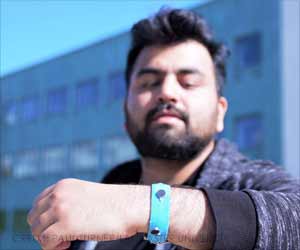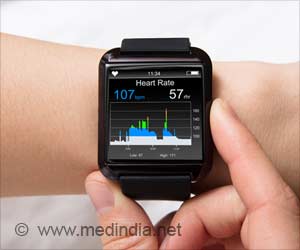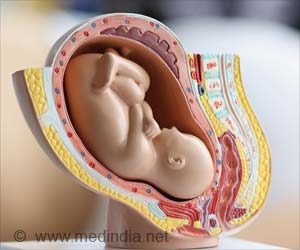Wearable smartwatches may offer a new, data-driven way to predict psychiatric disorders and connect them with genetic factors.

Digital phenotyping from wearables using AI characterizes psychiatric disorders and identifies genetic associations
Go to source). By training artificial intelligence models on this data, the team was able to predict the likelihood of various psychiatric disorders and identify genes associated with these conditions. The findings indicate that wearable sensors could offer a more detailed understanding and improved treatment options for psychiatric illnesses.
Advertisement
Wearable Sensors Could Revolutionize Psychiatric Diagnosis and Treatment
“In traditional psychiatry, a doctor will assess your symptoms and you’ll either be diagnosed with an illness or won’t”, says Professor Mark Gerstein, an expert in biochemistry, computer science, statistics and data science. “But in this study, we focused on processing the wearable data in a way that could both be leveraged to predict illnesses more comprehensively, and to better connect them to underlying genetic factors”.Detecting illnesses in such a quantitative way is difficult. But wearable sensors, which collect data continuously over time, may be the answer. For the new study, the team used data from the Adolescent Brain Cognitive Development Study, the largest long-term assessment of brain development and child health in the United States. The data used in the study — collected from smartwatches worn by adolescents aged 9-14 — included measurements of heart rate, calorie expenditure, physical activity intensity, step count, sleep level and sleep intensity.
Advertisement
Smartwatches as Diagnostic Tools: Introducing the Concept of Digital Phenotype
“When processed correctly, smartwatch data can be used as a ‘digital phenotype’”, says researcher Jason Liu, a member of Gerstein’s lab and co-lead author of the study. The researchers propose using the term digital phenotype to describe traits that can be measured and tracked with digital tools such as smartwatches.“One advantage of doing this is that we can use the digital phenotype almost as a diagnostic tool or a biomarker, and also bridge the gap between disease and genetics”, Liu adds.
To that end, the researchers also developed a methodology for obtaining the massive amount of smartwatch data and converting the raw data into information that could be used to train an AI model, “a new problem to solve in the research world which is technically challenging”, according to Gerstein.
The team found that heart rate was the most important measure for predicting ADHD, while sleep quality and stage (the different cycles a body goes through during sleep) were more important for identifying anxiety.
“These findings suggest that smartwatch data can provide us with information about how physical and behavioural temporal patterns relate to different psychiatric illnesses”, Gerstein said.
Advertisement
Smartwatch Data May Help Distinguish Psychiatric Subtypes and Link to Genetics
Moreover, the data could also help differentiate between different subtypes of the disease. “For example, within ADHD there are different forms”, said Beatrice Borsari, a postdoctoral associate at Gerstein’s lab and co-lead author of the study. “Maybe we can extend this work to help distinguish between forms of inattention and hyperactivity, which typically respond to different pharmacological treatments”. Having seen that the digital phenotype could be used to predict psychiatric illnesses, the team investigated whether it could also help identify underlying genetic factors, using a series of multivariate statistical tools developed thanks to the scientific contribution of the University of Barcelona.
“Our methodology has made it possible, for the first time, to simultaneously analyse the relationship between genetics and the different measures provided by smartwatches”, says Diego Garrido Martín, UB professor and co-author of the study.
Smartwatch Data Reveals Genetic Insights and New Approaches to Psychiatry
When they examined whether genetic mutations affected the smartwatch data differently in healthy individuals than in those with ADHD, they were able to identify 37 genes associated with ADHD. But when they ran a similar analysis to determine whether particular genes were associated with an ADHD diagnosis, they found none. This discovery highlights the added value of using continuous smartwatch data, says the team.The findings link psychiatric illnesses, digital phenotypes and genotypes and show how wearable sensors can provide a deeper understanding of psychiatric diseases.
“This method holds great promise for addressing long-standing challenges in psychiatry and may ultimately reshape the way we understand the genetics and symptom structure of psychiatric disorders”, said Walter Roberts, assistant professor of psychiatry at Yale School of Medicine and co-senior author of the study.
Although the study focused on ADHD and anxiety, the researchers expect the approach to be widely applicable. For example, it may be useful for understanding neurological diseases or neurodegeneration. In addition, they hope that their findings may serve as inspiration to move beyond traditional clinical diagnostics and adopt quantitative behavioural measurements that may be of greater use in identifying genetic biomarkers.
Reference:
- Digital phenotyping from wearables using AI characterizes psychiatric disorders and identifies genetic associations - (https://www.medrxiv.org/content/10.1101/2024.09.23.24314219v2)
Source-Eurekalert









